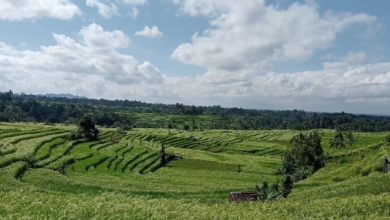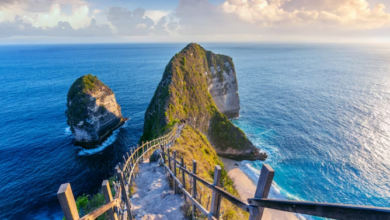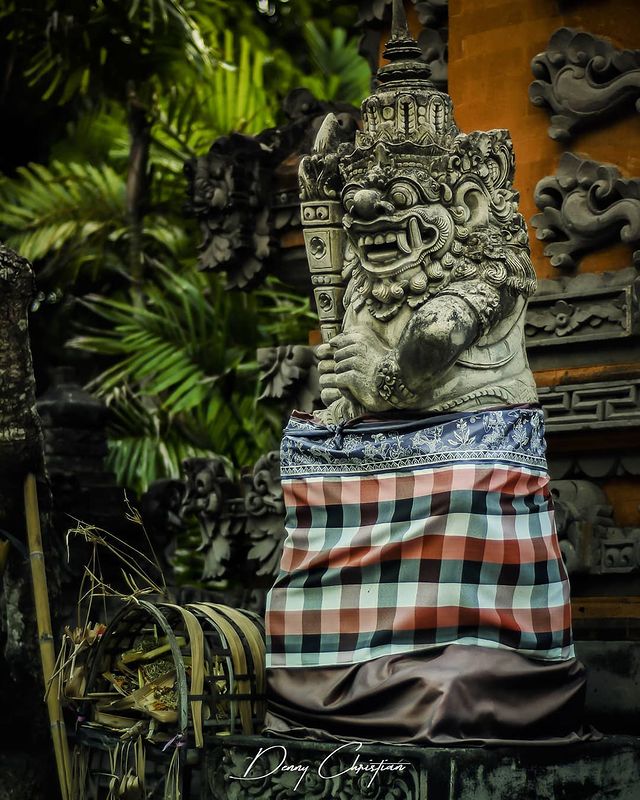
Dwarapala Statue of the Guardian
Table of Contents
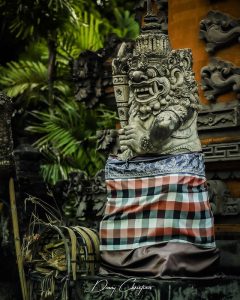
Visa Bali Info – Dwarapala Statue of the Guardian
Besides having a variety of interesting tourist objects, Bali also has cultural arts that are ingrained in the lives of its people.
Many arts have been born from cultures and traditions that have existed since time immemorial. Such as dance, painting, acting, sculpture and so on.
If you have ever been to Bali or are currently in Bali to enjoy a holiday, surely you will often see two statues in front of a temple or someone’s house.
The two statues are interpreted to protect the environment of a temple or someone’s house. Has the name Arca Dwarapala.
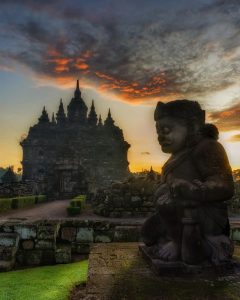
Dwarapala statue
According to wikipedia Arca Dwarapala is a statue of a gate or door guard in the teachings of Shiva and Buddha, in the form of a human or a monster.
Usually dwarapala is placed outside the temple, shrine or other building to protect the holy place or sacred place inside. Dwarapala is usually depicted as a scary creature.
Dwarapala is depicted in the form of a large and muscular statue with a club-wielding arm and thick curly hair.
Shows a unique expression with bulging eyes equipped with long big fangs adorning a thin smile which also implies a friendliness and firmness at the same time.
The facial expression that seems scary is actually a warning to people not to enter carelessly guarded buildings.
Not infrequently Dwarapala is wrapped or decorated with black and white poleng cloth. You will be very familiar with this statue when you are in Bali, because on every street you pass you will see this statue.
Dwarapala in Balinese Traditional Culture
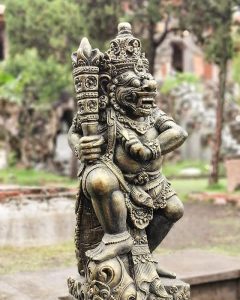
Dwarapala is often associated with mythology in Hinduism and classical wayang stories. Dwarapala has more meaning if it is placed at the entrance of the temple, not just as a display.
Dwarapala is believed to be a reflection of humans who will enter a holy place. His facial expressions remind people to introspect and clean their thoughts, words and deeds.
It can be interpreted that before entering a holy place, it is hoped that one can leave worldly traits.
Characteristics of Dwarapala Bali
Dwarapala in Bali has its own characteristics which can be composed of a pair of figures with different characters.
Examples of the Dwarapala pair that are commonly used are the brothers Subali and Sugriwa, the married couple Pan Brayut and Men Brayut, the father and child pair Merdah and Tualen, to the twin giants.
However, the Dwarapala couple also followed local environmental regulations. There are examples in the Uluwatu and Sangeh areas which are the original habitat of monkeys, Dwarapala in those areas will be related to monkeys.
Dwarapala Placement Layout
For the placement procedure, the masculine Dwarapala who has the character is placed “higher” (symbolizing the upper realm) or an older figure, usually placed on the left side of the gate.
As for the feminine character, it is placed “lower” (symbolizing the way/downgrade) placed on the right side of the outside of a gate.
The Philosophical Meaning of the Guardian, Dwarapala
Dwarapala figures have roles and functions with very deep meanings, these roles and functions can be categorized into three parts including;
- Dwarapala acts as a guard in charge of guarding the entrance to a sacred and holy area, with the meaning that humans and negative energies are not allowed to pass by inadvertently that can damage the tranquility or fade the sanctity of the central area and the area within a temple.
- Dwarapala acts as a selector which means Dwarapala will select every figure that will enter the sacred area. The Balinese believe that if someone has bad intentions when they pass through the gate of a holy place, they will get into trouble.
- Dwarapala has a role as an usher, receiver and guide because in these figures it is believed to be a symbol of guiding and guiding the people to a higher path or usually referred to as the ascending path.
The appearance of Dwarapala can be found in royal relics that adhere to Shiva-Buddhist teachings.
So don’t be surprised if Dwarapala is not only known in Bali. On the island of Java, such as in Yogyakarta and East Java, there are also Dwarapala in certain buildings and they are often very large.
The Best Visa Agency in Bali – www.visa4bali.com
Experienced specialists managing the entire application process from start to finish !




